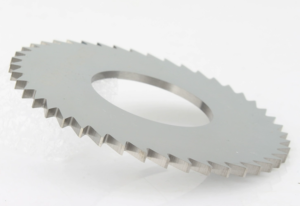When it comes to woodworking or metalworking, precision cuts are paramount. The ability to make accurate, clean cuts can mean the difference between a successful project and a disappointing one. At the heart of achieving precision cuts lies the standard saw blade. In this article, we delve into the intricacies of what makes a standard saw blade the epitome of precision in cutting, exploring its design, materials, and features.
Understanding the Anatomy of a Standard Saw Blade: A standard saw blade comprises several key components designed to facilitate precision cuts. These include the blade body, teeth, gullet, shoulder, and arbor hole. Each element plays a crucial role in ensuring smooth and accurate cutting action.
The Role of Tooth Design in Precision Cuts: One of the most critical aspects of a standard saw blade is its tooth design. The arrangement, shape, and angle of the teeth determine how efficiently the blade cuts through material while maintaining precision. Various tooth configurations, such as ATB (Alternate Top Bevel), TCG (Triple Chip Grind), and FTG (Flat Top Grind), cater to different cutting needs, from rip cuts to crosscuts and fine finishes.
Material Matters: Selecting the Right Blade Material for Precision: The material from which a standard saw blade is made significantly influences its ability to deliver precision cuts. High-quality steel alloys, carbide-tipped blades, and diamond-tipped blades are among the most common options. Each material offers distinct advantages in terms of durability, sharpness retention, and resistance to wear, contributing to the blade’s overall precision.
Fine-Tuning for Precision: Adjusting Blade Tension and Alignment: Achieving precision cuts also relies on proper blade tension and alignment. Tensioning the blade ensures it remains straight and stable during operation, minimizing vibrations that can compromise accuracy. Additionally, aligning the blade parallel to the cutting surface is essential for uniform cuts across the workpiece, especially in tasks requiring intricate detail.
Maintaining Sharpness for Consistent Precision: A sharp blade is indispensable for precision cutting. Regular maintenance, including sharpening and honing, is essential to keep the blade’s cutting edges keen and free from dullness. Dull blades not only compromise cutting accuracy but also increase the risk of kickbacks and accidents.
Safety Measures: Protecting Both Operator and Workpiece: Precision cutting with a standard saw blade necessitates adherence to strict safety protocols. Employing appropriate personal protective equipment (PPE), such as safety goggles and hearing protection, shields operators from potential hazards. Furthermore, securing workpieces with clamps or fixtures minimizes the risk of material displacement during cutting, ensuring precise outcomes.
Versatility and Adaptability: Expanding the Scope of Precision Cuts: While primarily associated with woodworking, standard saw blades exhibit remarkable versatility across various materials. From hardwoods and softwoods to metals and plastics, these blades demonstrate adaptability in achieving precise cuts across diverse applications. This versatility underscores their indispensable role in countless industries and DIY projects worldwide.
In the realm of precision cutting, the standard saw blade stands as a symbol of excellence. Through meticulous design, superior materials, and unwavering performance, it exemplifies the pinnacle of precision in woodworking and metalworking alike. By understanding the intricate nuances of its construction and operation, craftsmen and enthusiasts can harness the full potential of the standard saw blade to bring their creative visions to life with unparalleled accuracy and finesse.
